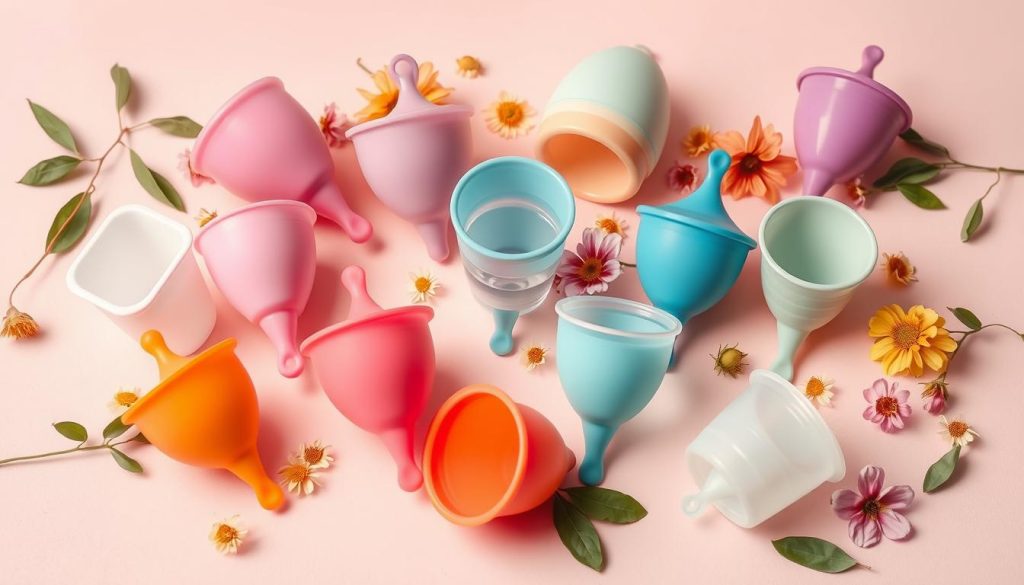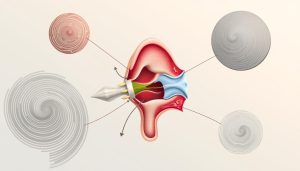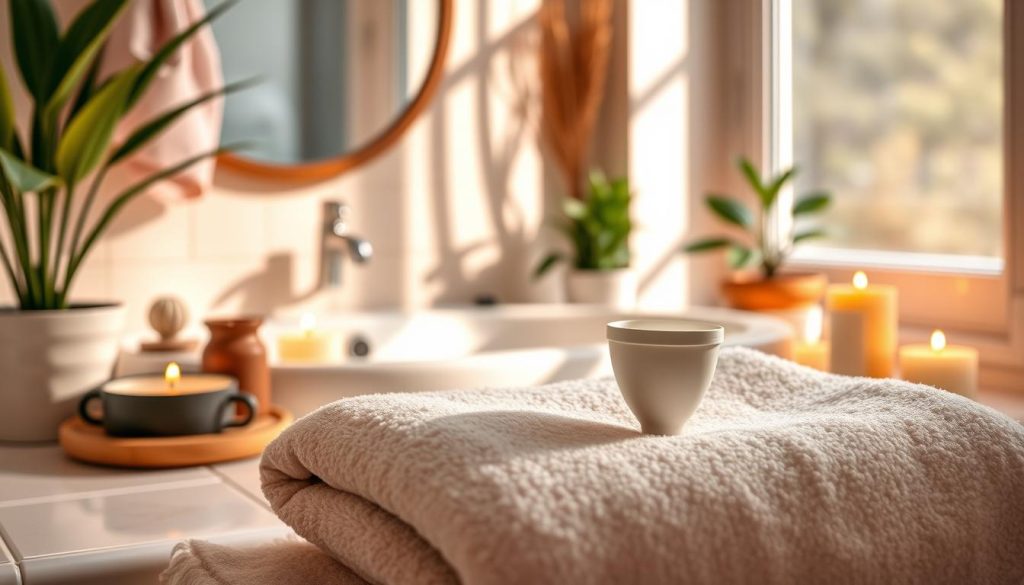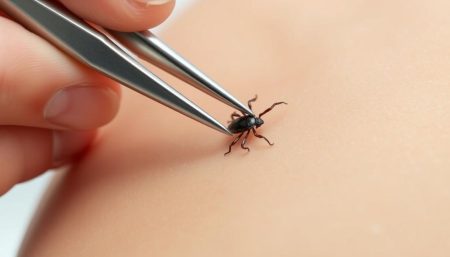Starting with menstrual cups can change your life, blending health with the planet’s well-being. Our guide is more than just steps; it’s a journey to a greener period. It’s about making a difference in our world.
Our guide is for those wanting a reliable and comfy menstrual cup experience. It’s about starting safely and smoothly. We’ll show you how to make this switch easy and fulfilling.
Safe practices are key in our guide. We’re ready to share the details for a confident, eco-friendly period. We focus on your comfort and the planet’s health, preparing you for a smooth transition.
Understanding the Basics of Menstrual Cups
Menstrual cups are becoming more popular. They are seen as a sustainable and cost-effective option. More people are interested in learning how to use them and what choices are available.
What Is a Menstrual Cup and How Does It Work?
A menstrual cup is a flexible, bell-shaped device for collecting menstrual blood. It’s made from medical-grade materials like silicone or rubber. It’s a reusable alternative to pads and tampons.
The cup seals against the vaginal wall, catching blood instead of absorbing it. This reduces waste and health risks. It’s a healthier and greener option.
Benefits of Switching to a Menstrual Cup
Switching to a menstrual cup has many benefits. It’s healthier and better for the environment. It’s also more cost-effective over time.
Using a menstrual cup means fewer changes and less risk of health issues. It’s a big step towards reducing waste. Many find it makes their period easier to manage.
Types of Menstrual Cups Available
There are many types of menstrual cups. They come in different sizes and materials. Some are firmer, while others are softer.
Sizes range from small for teens and those who haven’t given birth to large for women with heavier flows. There’s a cup for everyone.
| Brand | Material | Size Options | Flexibility |
|---|---|---|---|
| DivaCup | Medical-grade silicone | Small, Medium, Large | Moderate |
| Lena Cup | Medical-grade silicone | Small, Large | Soft |
| Mooncup | Medical-grade silicone | Size A, Size B | Firm |
| OrganiCup | Medical-grade silicone | Mini, A, B | Soft to moderate |

Learning how to use a menstrual cup is important. By trying different options, women can find a method that works for them. It’s a healthy and eco-friendly way to manage their period.
Menstrual Cup Selection: Finding the Right Fit
Choosing the right menstrual cup is key for comfort and effectiveness. We’ll help you pick the right size and material. We’ll also look at brands based on user reviews. Knowing what your body needs can make your menstrual care better.
Determining the Appropriate Size and Material
Menstrual cups come in materials like medical-grade silicone, latex, or thermoplastic elastomer. Each has its own feel, comfort level, and allergy risk. Think about your skin to pick the best material.
Menstrual cup sizes range from small to large. They depend on your age, if you’ve had children, and how much you bleed. The right size stops leaks and makes insertion easy. Start with a smaller size if you’re new to menstrual cups.
Brand Comparisons and User Reviews
We’ve compared popular menstrual cup brands based on user feedback. The table below shows material, size options, and how users rate them.
| Brand | Material | Available Sizes | User Rating |
|---|---|---|---|
| Brand A | Medical-grade Silicone | Small, Medium, Large | 4.5/5 |
| Brand B | Thermoplastic Elastomer | Small, Large | 4.2/5 |
| Brand C | Latex | Medium, Large | 4.7/5 |
| Brand D | Medical-grade Silicone | Small, Medium | 4.3/5 |
Looking at sizes, material quality, and user feedback is important. It helps find the best menstrual cup for you. This makes your menstrual cycle more comfortable and efficient.
The Importance of Hygiene in Menstrual Cup Use
Keeping your menstrual cup clean is key to your health and comfort. It’s not just about avoiding bad smells. It also helps prevent infections and irritation. Here are some important steps for keeping your cup clean.
First, always wash your hands before touching your menstrual cup. This simple step stops harmful bacteria from getting to your body.
- Wash your hands with soap and warm water before and after touching your menstrual cup.
- Rinse the cup well under running water to get rid of soap or dirt. Use hot water but not too hot to kill bacteria without harming the cup.
- Boil your menstrual cup at the start and end of each cycle. Make sure it doesn’t touch the bottom of the pot to avoid damage.
Regular care is essential to keep your cup safe and effective. How you store your cup is also important. Keep it in a breathable pouch and avoid airtight containers to stop moisture and bacteria buildup.
Following these tips will help your menstrual cup stay a safe and effective choice for managing your periods.
Preparation and Storage: Keeping Your Menstrual Cup Clean
Keeping your menstrual cup clean is important. You need to clean it before you first use it and store it properly between periods. Following these steps helps your cup last longer and keeps you healthy.
Cleaning Before First Use
Before using your menstrual cup for the first time, clean it well. Start by washing your hands with soap and water. This stops bacteria from getting on the cup.
Then, rinse the cup under warm water to get rid of any dust or leftover materials from making it. For a really clean cup, boil it in water for 5 to 10 minutes. This kills all germs, making it safe for your first use.
Proper Storage Between Periods
Storing your menstrual cup right is important for keeping it clean and in good shape. Always put it in a breathable container or a cotton bag. This stops moisture from building up, which can cause bacteria to grow.
Don’t use airtight containers or places that are too hot. These can damage the silicone of your cup over time.
- Wash the menstrual cup thoroughly before storing.
- Dry the cup completely to avoid moisture.
- Place it in a breathable fabric bag.
- Store in a cool, dry place away from direct sunlight.
Step-by-Step Guide: Menstrual Cup Insertion
For many first-time users, the menstrual cup insertion process can seem tough. Here’s a detailed guide with menstrual cup tips to make it easy and comfy.
- Wash your hands thoroughly. Always start by cleaning your hands to prevent any transfer of bacteria to the cup.
- Relax your muscles. Find a comfy position that lets you relax your vaginal muscles. This could be squatting, sitting on the toilet, or putting one leg up.
- Fold the menstrual cup. There are many folding methods, like the C-fold or the punch-down fold. Pick one that feels easier for you.
- Gently insert the folded cup. Hold the cup firmly and gently slide it into your vagina at an angle, aiming towards the base of the spine.
- Ensure the cup is fully open. Once inserted, rotate the cup slightly or run a finger around the cup to make sure it has fully unfolded and there’s a seal.
- Check for comfort. Move around a bit to ensure the cup is comfortable and there isn’t any pinching or discomfort.
By following these steps, you’ll understand the menstrual cup insertion process better. You’ll also get useful menstrual cup tips for new users.
| Folding Technique | Description | Benefits |
|---|---|---|
| C-Fold | Fold the cup in half and then in half again, forming a C shape. | Simple and quick, suitable for beginners. |
| Punch-Down Fold | Push one side of the rim down into the cup. | Makes the insertion point smaller and easier to insert. |
| 7-Fold | Fold one corner of the cup down to the opposite base, forming a 7 shape. | Reduces the diameter significantly, allowing for easier insertion. |
Mastering Menstrual Cup Folding Techniques
Learning different menstrual cup folding techniques can make using a cup easier and more comfortable. The C fold is a favorite because it’s simple and works well. It’s great for both beginners and those who have used cups before.
The “C” Fold Explained
The C fold, or U fold, is a top pick for inserting a menstrual cup. To do a C fold, press down on the cup’s sides to flatten it. Then, fold it in half to look like a C or U. This shape makes it easier to put in the cup.
Alternative Folding Methods for Easier Insertion
While the C fold is great, there are other methods too. Trying out different folds can help you find what works best for you. This ensures you get the most comfort and ease.
- Punch Down Fold: Press one side of the cup’s rim down to the base, creating a smaller point of insertion.
- S Fold: Flatten the cup, then bend it in the middle to form an S shape, which can be easier to grip during insertion.
- 7 Fold: Flatten the cup and fold one corner down to the opposite base, forming a figure 7.
Trying out these different folds can really help. It makes inserting the cup easier and more comfortable.
| Folding Method | Shape Before Insertion | Suitability |
|---|---|---|
| C Fold | Narrow U-shape | Beginners & Experienced Users |
| Punch Down Fold | Pointed Tip | Those needing smaller insertion point |
| S Fold | Compact S-shape | Users with strong grip |
| 7 Fold | Angled 7-shape | Users seeking ease of insertion |
Troubleshooting Common Insertion Issues
Many people face menstrual cup insertion trouble when they start using one. Knowing how to solve common problems can make using a menstrual cup better.
| Issue | Solution |
|---|---|
| Difficulty with Cup Popping Open | Try rotating the cup or using a different folding technique that allows more air into the cup. |
| Feeling of Discomfort | Ensure the cup is not inserted too high or too low. Adjust the position slightly until comfortable. |
| Leakage After Insertion | Check that the cup has fully unfolded and formed a seal. You may need to run a finger around the cup to confirm. |
| Difficulty During Insertion | Use water or a water-based lubricant to ease the insertion process of the menstrual cup. |
If these tips don’t help with your menstrual cup insertion trouble, talk to a healthcare provider. They can offer more advice and help you use your menstrual cup correctly.
Ensuring a Secure Fit: Tips for Menstrual Cup Placement
Knowing how to place your menstrual cup is key for a comfortable and leak-free experience. It’s important for your daily activities and keeping leaks at bay. We’ll look at signs of proper placement and how to adjust for any discomfort.
How to Know If Your Menstrual Cup Is Positioned Correctly
It’s essential to know if your menstrual cup is in the right spot. It should not cause any pain, and you shouldn’t feel it when you’re wearing it. The cup’s base should sit a few inches below the cervix, without touching it.
If it’s correctly placed, the cup will unfold fully, creating a tight seal that stops leaks. A well-positioned cup also makes it easier to remove, making your experience hassle-free.
What to Do If Your Menstrual Cup Is Uncomfortable
If you feel discomfort or leakage, you might need to adjust the menstrual cup placement. Start by gently rotating the cup once it’s inside. This makes sure it’s fully open and securely fits against the vagina’s walls.
If the discomfort doesn’t go away, try folding the cup differently and re-inserting it. Remember, it might take a few cycles to get it right.
- Check for proper unfolding by gently pulling the stem. If the cup doesn’t move easily, the suction seal is likely in place.
- After insertion, squat and rotate the cup to help it find a natural and comfortable position.
- If repeated adjustments don’t alleviate discomfort, consider trying a different size or brand tailored to your anatomical needs.
Menstrual Cup Removal: Best Practices and Techniques
Removing your menstrual cup safely is key to good hygiene and comfort. This section dives into easy menstrual cup removal techniques. It also shares tips to stop menstrual cup leaks during removal.
How to Safely Remove Your Menstrual Cup
First, wash your hands well before trying to remove the cup. Pinch the base of the cup, not just the stem, to break the suction. This makes removal pain-free. Tilt the cup a bit sideways to take it out without discomfort.
Avoiding Spills and Leaks During Removal
Where you stand is important to avoid spills when taking out your menstrual cup. Lean forward a bit and make sure you’re over the toilet or in the shower. This position helps control any menstrual cup leaks.
- Always keep the cup upright until it’s safely out to avoid spills.
- Practice relaxation techniques as tensing up can make removal harder and messier.
- Right after removal, empty the cup into the toilet or sink and rinse with water before cleaning.
The image below shows the right posture and handling for safe menstrual cup removal.
Following these tips will make using your menstrual cup smooth and clean. It keeps you comfortable and confident during your period.
Addressing Leakage: Solutions and Preventive Measures
Menstrual cup leakage can be a big problem for both new and experienced users. Knowing the common causes and using practical tips can help a lot. This way, you can enjoy a more comfortable period.
To stop menstrual cup leakage, focus on the fit and position of the cup. Here are some tips to help you get a leak-proof seal:
- Make sure the cup is fully unfolded and placed low in the vaginal canal.
- Rotate the cup after putting it in to make a vacuum seal that stops leaks.
- Check the seal by gently pulling on the stem of the cup. If you feel resistance, it’s likely sealed well.
Also, picking the right size and type of cup is key. Your age, if you’ve had children, and how much you bleed all matter when choosing a cup.
| Consideration | Recommended Action |
|---|---|
| Heavy Menstrual Flow | Go for a bigger cup to handle more flow and cut down on leaks. |
| Post-Childbirth | Use a softer, bigger cup to fit changes in vaginal tightness and strength. |
| Physical Activity Level | Choose a firmer cup for high-impact activities to keep it in place. |
Remember, finding the perfect menstrual cup takes trying different brands or sizes.
Using these tips helps get a good fit, cuts down on leaks, and makes your period more comfortable. It takes practice and patience to get good at using menstrual cups.
The Dos and Don’ts of Menstrual Cup Use
Using a menstrual cup right is key. This guide will show you the best menstrual cup practices. It also covers important menstrual cup dos and don’ts for safe and effective use.
The Dos: Best Usage Practices
- Always sterilize your menstrual cup before each cycle to keep it clean and prevent infections.
- Practice inserting and removing your menstrual cup when your flow is lighter. This helps you get used to it.
- Choose the right size for your needs. This ensures comfort and prevents leaks.
- Empty your menstrual cup every 12 hours, or more often during heavy days. This keeps it clean.
The Don’ts: Common Missteps to Avoid
- Avoid using silicone-based lubricants for insertion. They can damage the cup. Use water or water-based lubricants instead.
- Never store your menstrual cup in airtight containers or plastic bags. Use breathable cotton bags to keep air in and moisture out.
- Do not use a menstrual cup if you have an active infection like yeast or bacterial infections. Wait until it’s fully gone to use it again.
- Don’t overlook discomfort or pain that might mean the cup is not in right or the size is wrong. Adjust it or talk to a healthcare provider.
Following these guidelines will make your menstrual cup use safe and effective. It ensures a good experience at every step.
| Aspect | Do | Don’t |
|---|---|---|
| Sterilization | Sterilize before each cycle’s use | Use harsh chemicals for cleaning |
| Lubrication for Insertion | Use water-based lubricant | Use silicone-based lubricant |
| Storage | Store in breathable material | Store in airtight containers |
| When Facing Discomfort | Adjust position or consult a professional | Ignore the discomfort or continue use without adjustments |
Menstrual Cup Care: Cleaning and Maintenance
Keeping your menstrual cup clean is key for its longevity and hygiene. A good cleaning routine and occasional deep clean are essential. This ensures a safe and comfortable experience every month.
Daily Cleaning Routine
Washing your menstrual cup with mild soap and water is vital. It removes fluids and residue that build up. Clean it twice a day during your period—morning and night.
Deep Cleaning and Sterilization Techniques
Deep cleaning, or menstrual cup sterilization, is needed before first use and after each cycle. It gets rid of all bacteria and buildup.
| Sterilization Method | Description | Frequency |
|---|---|---|
| Boiling in Water | Submerge the menstrual cup in boiling water for 3-5 minutes | Before the first use and after each cycle |
| Hydrogen Peroxide | Use a diluted solution for soaking the cup for a maximum of 24 hours | As needed for stain removal |
| Vinegar and Water Solution | Mix equal parts of vinegar and water to soak the cup briefly | Occasionally, to remove odors |
Following these menstrual cup maintenance and sterilization tips keeps your cup in top shape. It ensures comfort and security during your period. Regular care extends the cup’s life and keeps your menstrual experience clean.
Comparing Menstrual Cup Use with Other Feminine Hygiene Products
When looking at menstrual cup vs tampons, we must think about cost, comfort, and health. This menstrual products comparison gives you the facts you need to decide.
Menstrual cups are a reusable option that can last up to 10 years. They reduce waste and save money in the long run. Tampons, on the other hand, need to be bought often, leading to more costs and waste. For more on the health benefits of using menstrual cups, read this article on long-term health impacts of menstrual products.
| Product Type | Cost Over 10 Years | Comfort | Environmental Impact | Health Implications |
|---|---|---|---|---|
| Menstrual Cup | $40 – $70 | High (after initial adjustment) | Low (reusable) | Lower risk of TSS, no chemicals |
| Tampons | $480 – $720 | Medium | High (frequent disposal) | Higher risk of TSS, possible chemical exposure |
Comfort can vary, but many find menstrual cups comfortable once they get used to them. They don’t need to be changed as often as tampons, which are more frequent on heavy days. Health-wise, menstrual cups are safer because they’re made from medical-grade silicone. They have a lower risk of Toxic Shock Syndrome (TSS) and don’t have chemicals found in tampons.
- Initial Cost: Menstrual cups cost more upfront but save money later.
- Comfort and learning curve: Cups take some getting used to but are very comfortable.
- Eco-friendliness: Menstrual cups are better for the environment than tampons.
- Health and safety: Cups are safer than tampons.
In conclusion, understanding menstrual cup vs tampons in this menstrual products comparison helps you choose a green and healthy option. It’s all about what works best for you and your body.
Listening to Your Body: Recognizing When to Seek Medical Advice
Using a menstrual cup is good for the planet and your health. But, it’s important to listen to your body. If you feel pain, discomfort, or irritation, it’s time to see a doctor. These signs mean your body is trying to tell you something.
Menstrual cup safety means knowing when something’s off. If you’re in pain or having trouble using the cup, don’t ignore it. Also, if your flow changes or you leak a lot, talk to your doctor. It’s key to know the difference between learning to use it and a real health issue.
Always trust your body’s signals. If you notice anything different or worrying, get help. A doctor can give you advice tailored to you. This way, you can enjoy using menstrual cups without any health worries.
FAQ
Q: What Is a Menstrual Cup and How Does It Work?
A: A menstrual cup is a reusable product for feminine hygiene. It’s made of flexible silicone, rubber, or elastomer. You insert it into your vagina to collect menstrual fluid. Unlike tampons and pads, it holds the fluid until emptied.
Q: What Are the Benefits of Switching to a Menstrual Cup?
A: Menstrual cups are eco-friendly and cost-effective. They’re also more comfortable than traditional products. They hold more fluid, reducing the need for frequent changes. They’re free of chemicals and fragrances, good for those with sensitivities.
Q: How Do I Determine the Appropriate Menstrual Cup Size and Material for Me?
A: The right size and material depend on your age, flow, cervix height, and if you’ve given birth vaginally. Most brands offer small and large sizes. Materials range from soft to firm. Research and consult your healthcare provider for the best choice.
Q: How Should I Clean My Menstrual Cup Before First Use?
A: Sterilize your menstrual cup before first use. Boil it in water for 5 to 10 minutes, as instructed. Wash your hands before handling and inserting the cup.
Q: What Is the Best Way to Store My Menstrual Cup Between Periods?
A: Store your menstrual cup in a breathable container or cotton bag after cleaning and drying. Avoid airtight containers to prevent bacterial growth. Many cups come with storage bags.
Q: Could You Provide a Step-by-Step Guide for Menstrual Cup Insertion?
A: First, wash your hands. Then, fold the cup (like the C fold or punch-down fold). Relax and gently separate your labia. Guide the folded cup into your vagina, pointing it back and downwards. Rotate it slightly to ensure a seal.
Q: What Are Some Menstrual Cup Folding Techniques?
A: Common folds include the C fold, punch-down fold, and 7 fold. These help you find a comfortable insertion method. Experiment to find what works best for you.
Q: How Can I Address Menstrual Cup Leakage?
A: Ensure your cup is correctly inserted and sealed. Choose the right size. If leakage occurs, try a different size or shape. Empty it more often on heavier days.
Q: How Do I Know If My Menstrual Cup Is Positioned Correctly?
A: A correctly positioned cup should not be felt. It should be comfortable and not leak. Check the seal by feeling the base of the cup; it should be round or oval.
Q: How Should I Safely Remove My Menstrual Cup?
A: Wash your hands first. Use your pelvic muscles to push the cup down. Pinch the base to break the seal. Gently rock and pull down to remove it. Empty the contents and wash the cup for reuse.
Q: What Are the Dos and Don’ts of Menstrual Cup Use?
A: Follow instructions, keep hands clean, and sterilize your cup. Learn proper insertion and removal. Listen to your body. Don’t use damaged cups, store in airtight containers, use oil-based lubricants, or neglect cleaning.
Q: How Do I Clean and Maintain My Menstrual Cup?
A: Wash with mild soap and water after each use. Sterilize by boiling at the end of your cycle. Store in a breathable case and check for wear or damage.
Q: How Does Menstrual Cup Use Compare to Using Tampons or Pads?
A: Cups hold more fluid, so you may change them less often. They’re reusable, eco-friendly, and cost-effective. Cups collect fluid, which can be less drying than absorbent products.
Q: When Should I Seek Medical Advice Regarding Menstrual Cup Use?
A: Seek advice for pain, discomfort, allergic reactions, infection symptoms, or health concerns. If you can’t remove your cup, contact a healthcare professional immediately.


















